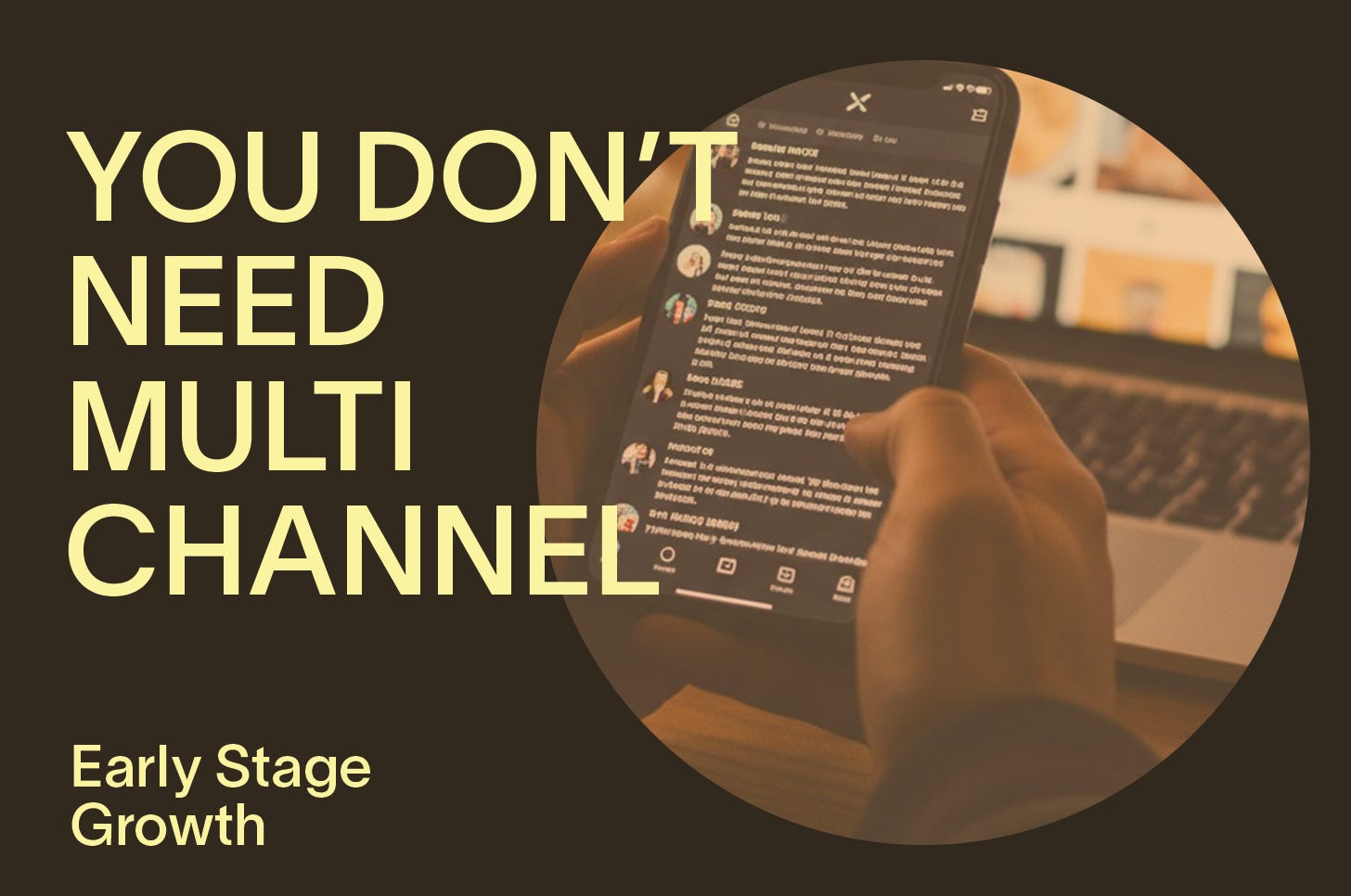You don’t need a multichannel strategy
You can easily get to £3-5m ARR just on your primary channel
“Most companies get zero channels to work.” — Peter Thiel
Growth strategies and marketing strategies are almost always plans, not strategies.
They are staggered timelines of when to introduce campaigns and channels. Maybe they feature some goal setting.
But they’re not strategies.
A good growth strategy includes two core elements:
Analysis of where the curre…



